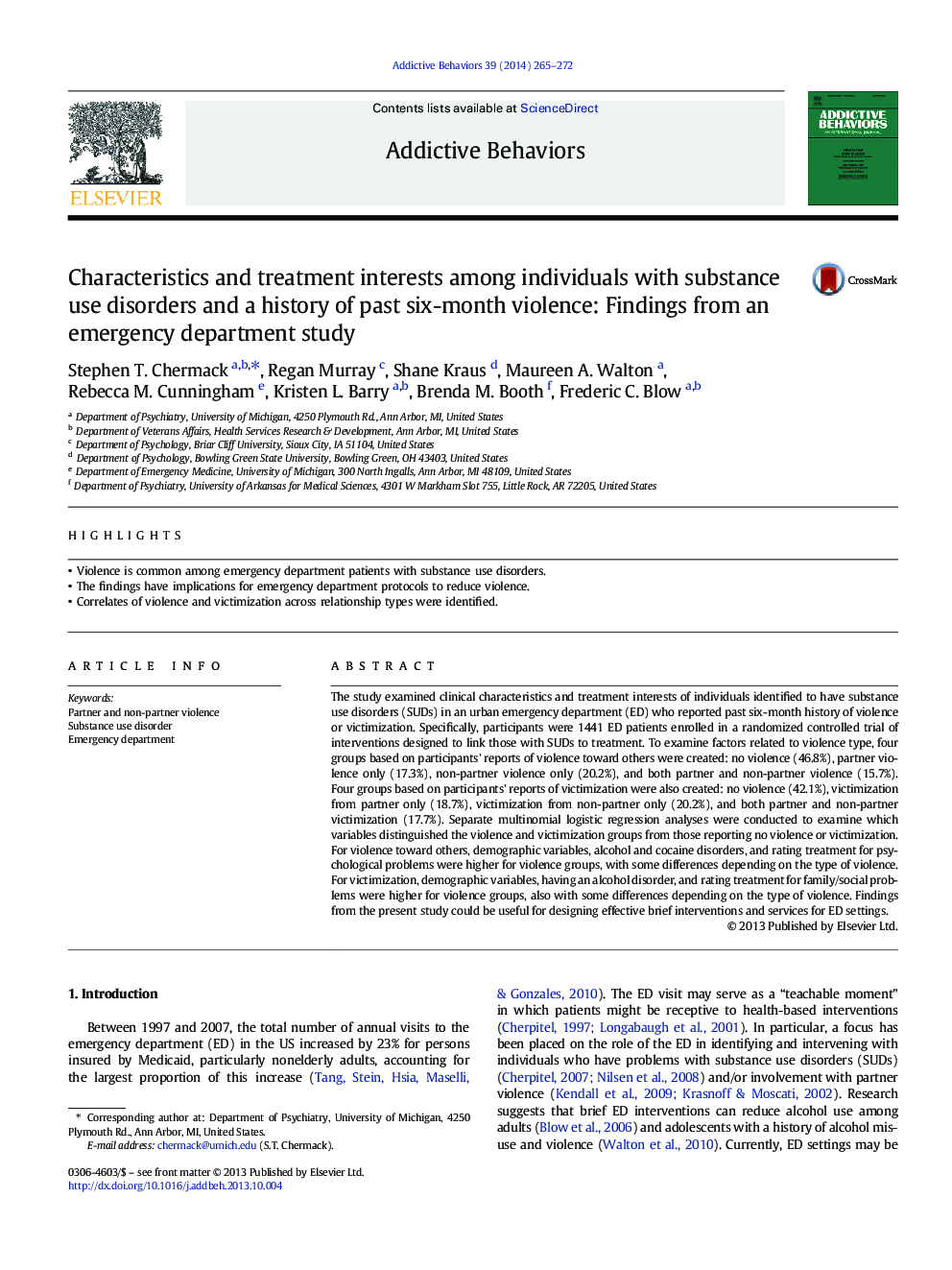| کد مقاله | کد نشریه | سال انتشار | مقاله انگلیسی | نسخه تمام متن |
|---|---|---|---|---|
| 899003 | 915352 | 2014 | 8 صفحه PDF | دانلود رایگان |
• Violence is common among emergency department patients with substance use disorders.
• The findings have implications for emergency department protocols to reduce violence.
• Correlates of violence and victimization across relationship types were identified.
The study examined clinical characteristics and treatment interests of individuals identified to have substance use disorders (SUDs) in an urban emergency department (ED) who reported past six-month history of violence or victimization. Specifically, participants were 1441 ED patients enrolled in a randomized controlled trial of interventions designed to link those with SUDs to treatment. To examine factors related to violence type, four groups based on participants' reports of violence toward others were created: no violence (46.8%), partner violence only (17.3%), non-partner violence only (20.2%), and both partner and non-partner violence (15.7%). Four groups based on participants' reports of victimization were also created: no violence (42.1%), victimization from partner only (18.7%), victimization from non-partner only (20.2%), and both partner and non-partner victimization (17.7%). Separate multinomial logistic regression analyses were conducted to examine which variables distinguished the violence and victimization groups from those reporting no violence or victimization. For violence toward others, demographic variables, alcohol and cocaine disorders, and rating treatment for psychological problems were higher for violence groups, with some differences depending on the type of violence. For victimization, demographic variables, having an alcohol disorder, and rating treatment for family/social problems were higher for violence groups, also with some differences depending on the type of violence. Findings from the present study could be useful for designing effective brief interventions and services for ED settings.
Journal: Addictive Behaviors - Volume 39, Issue 1, January 2014, Pages 265–272
